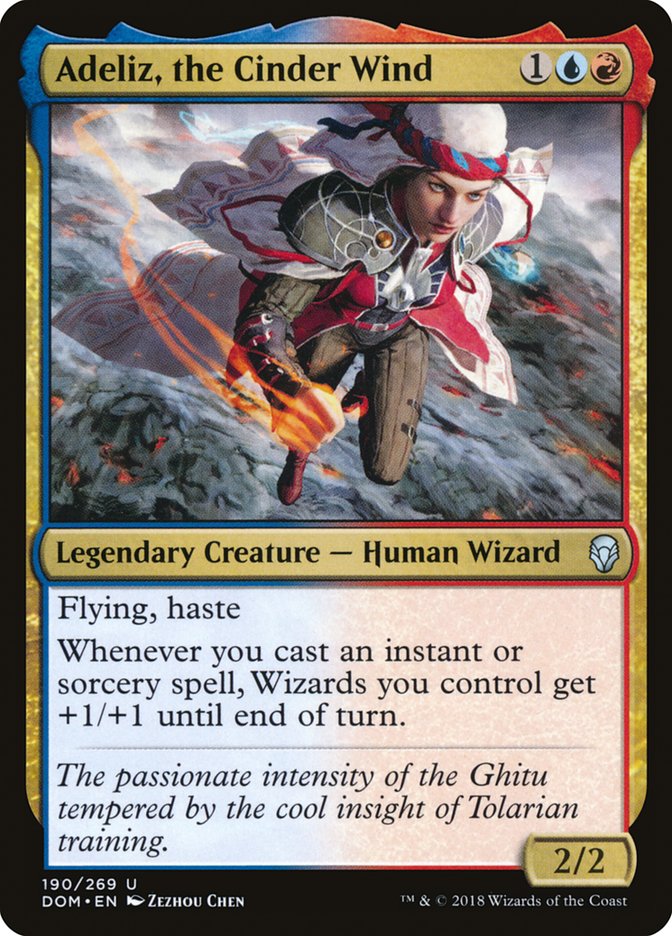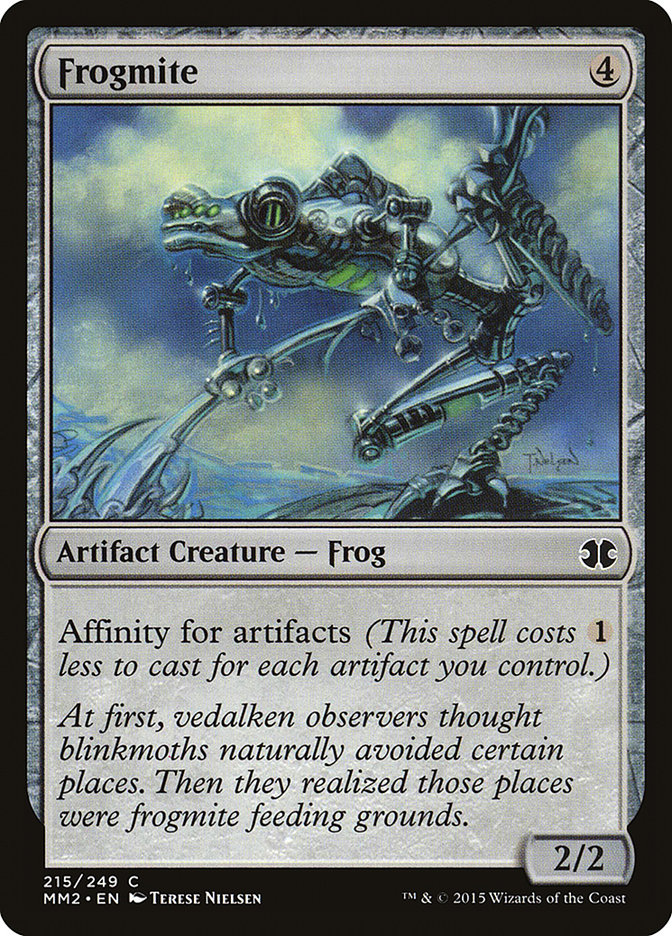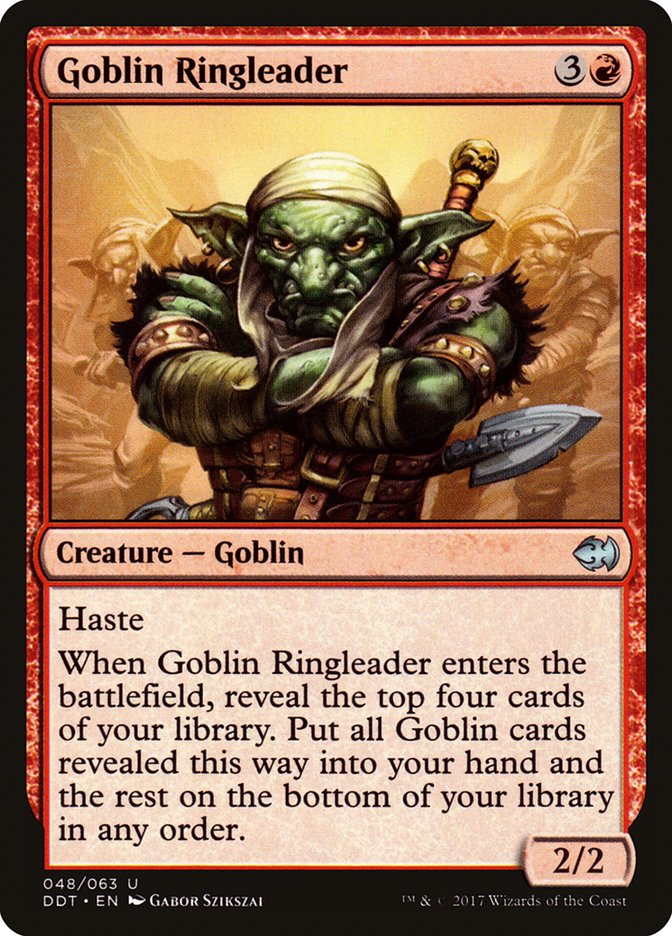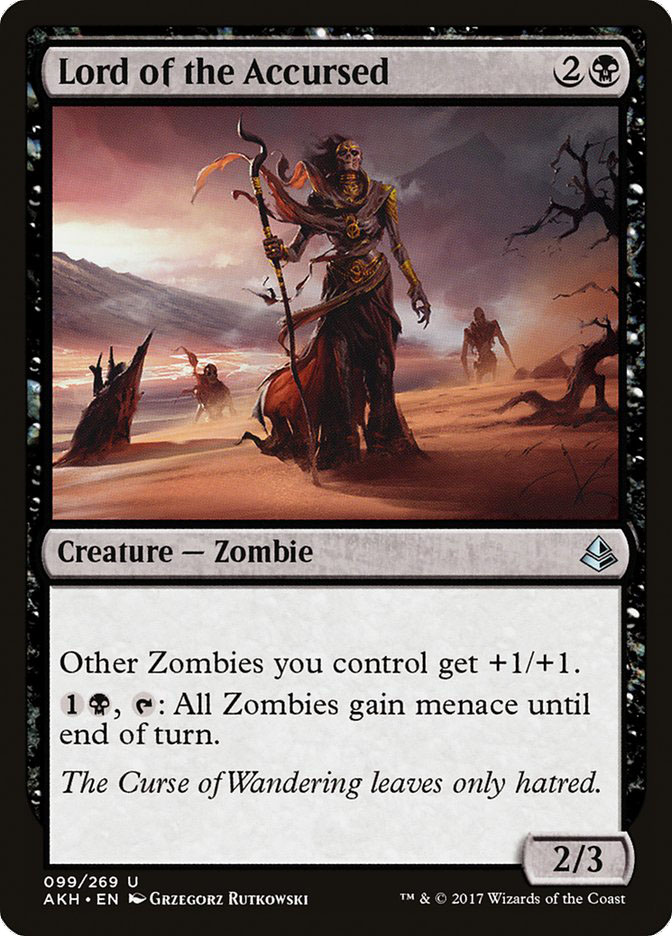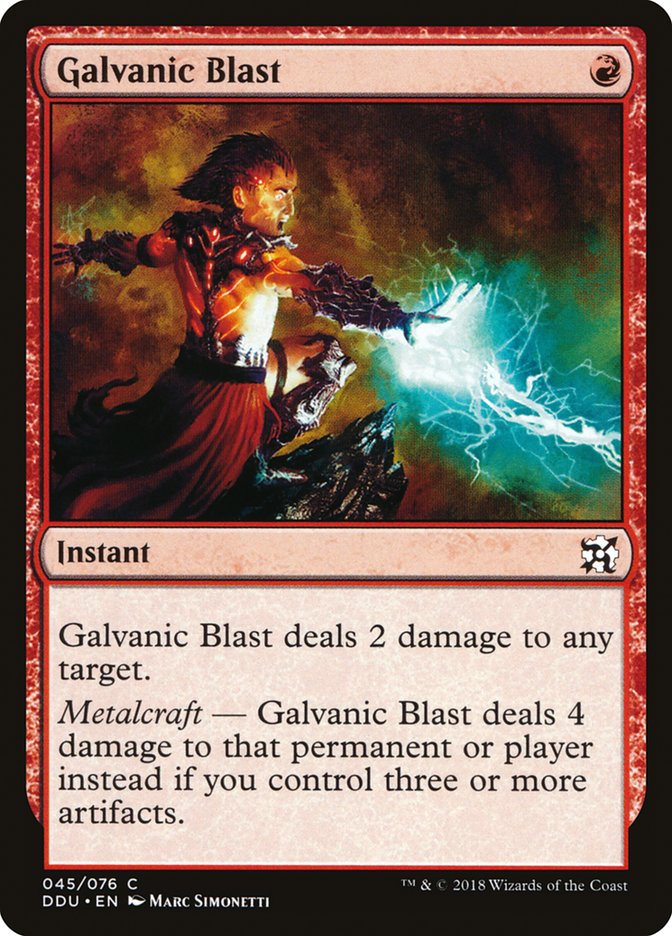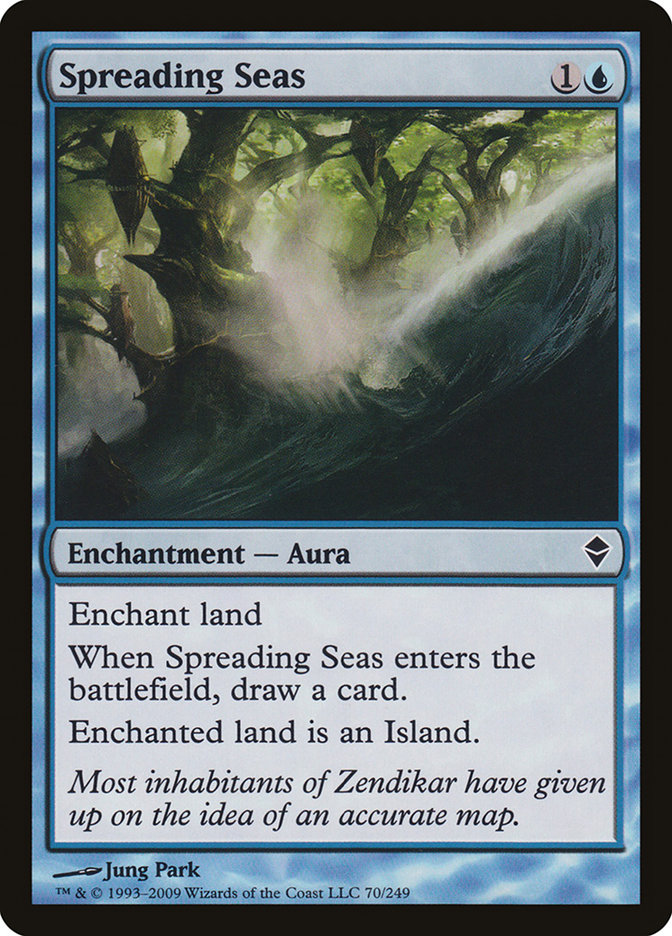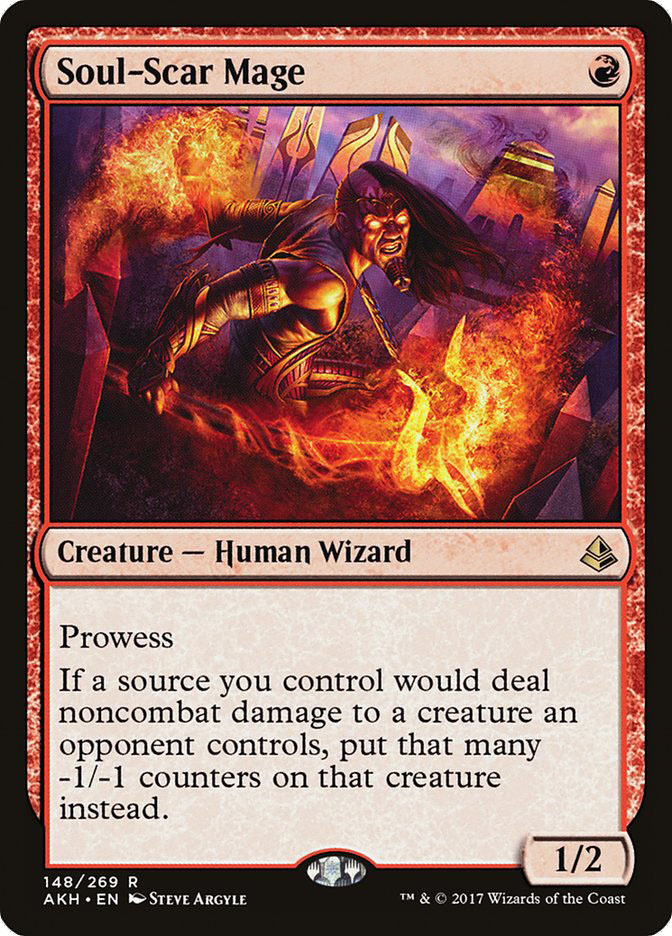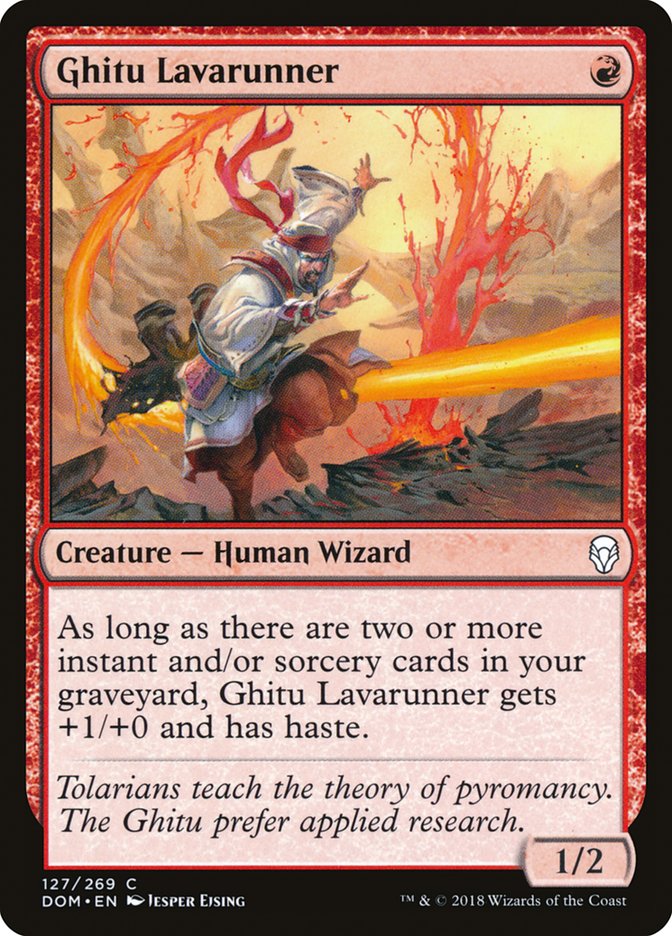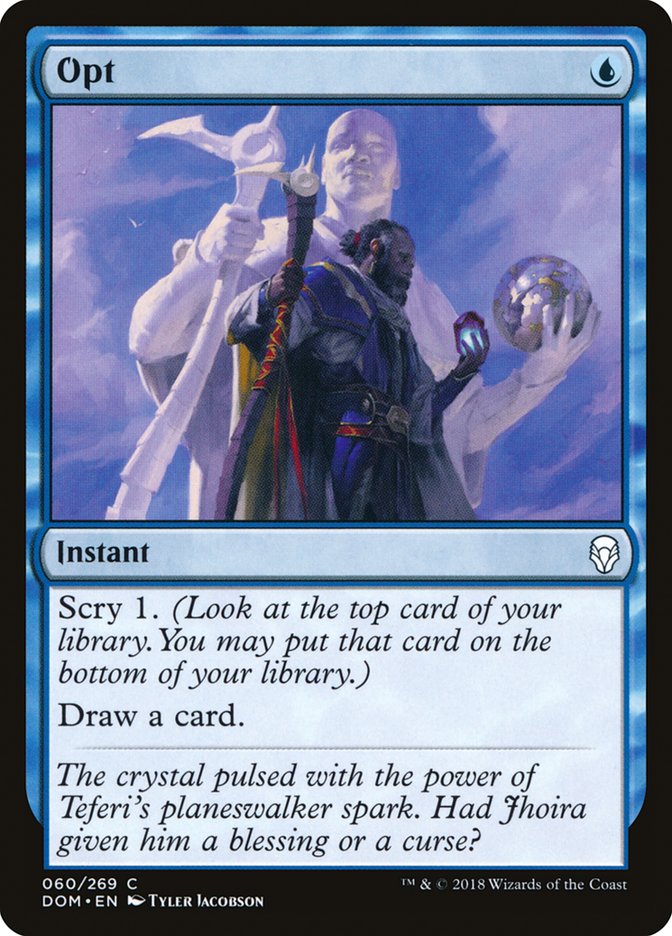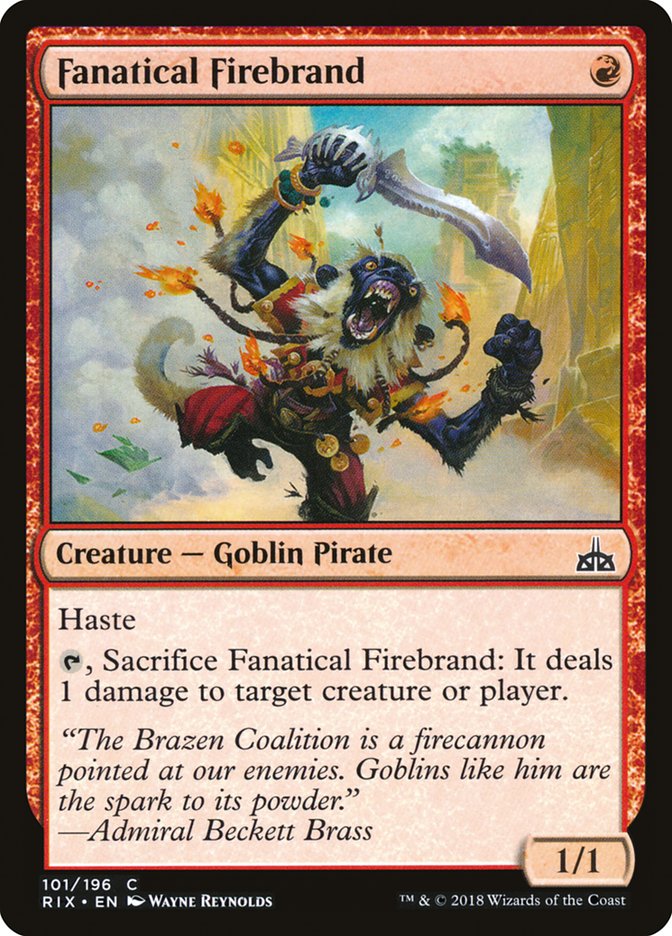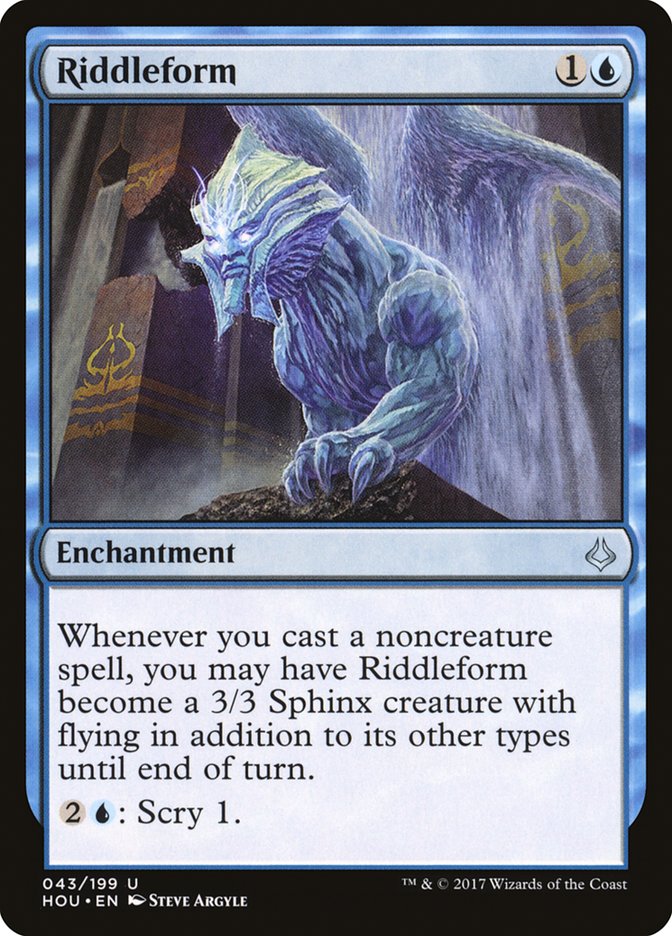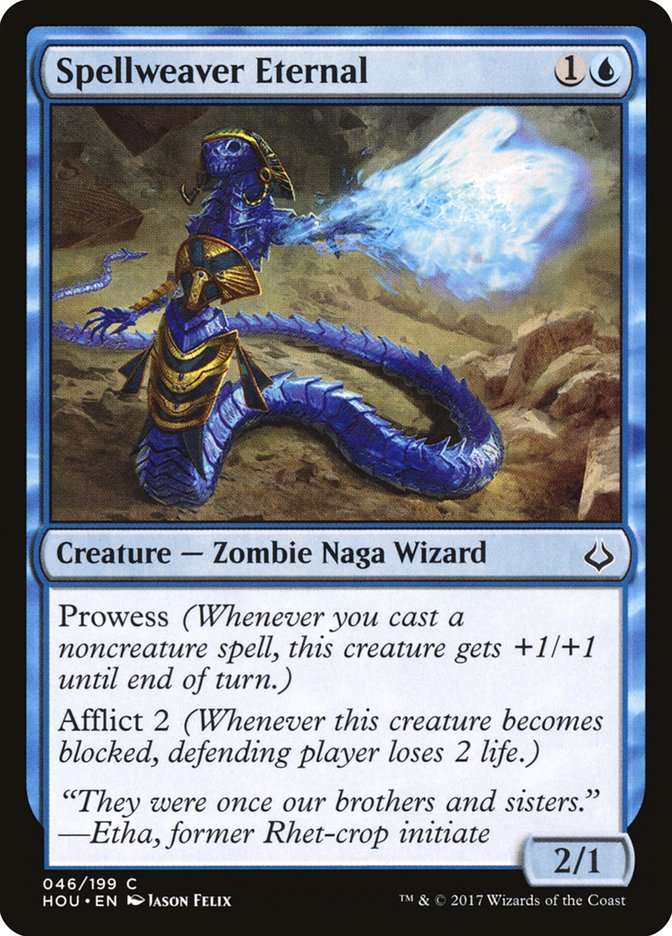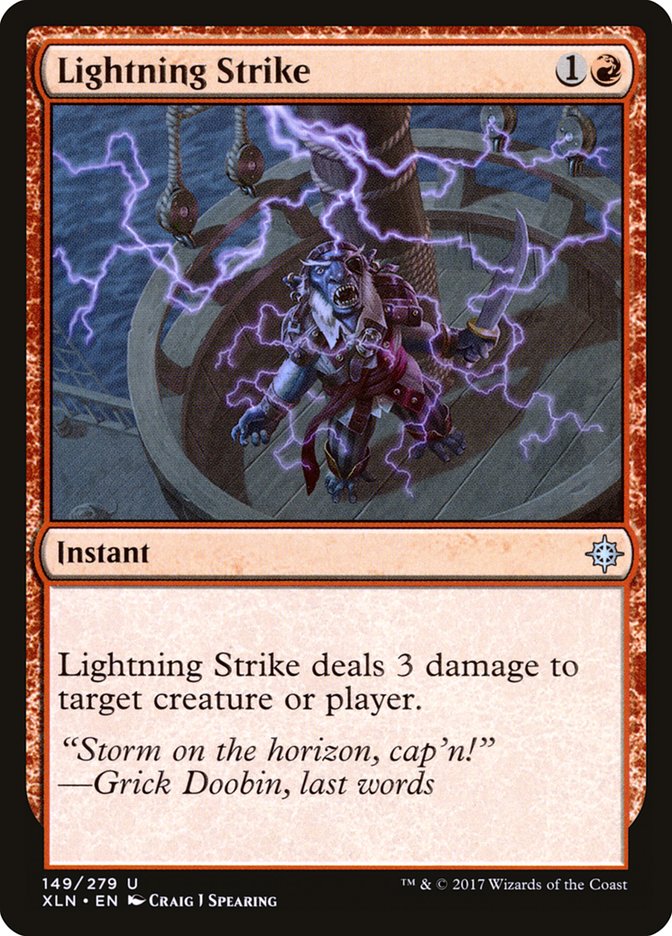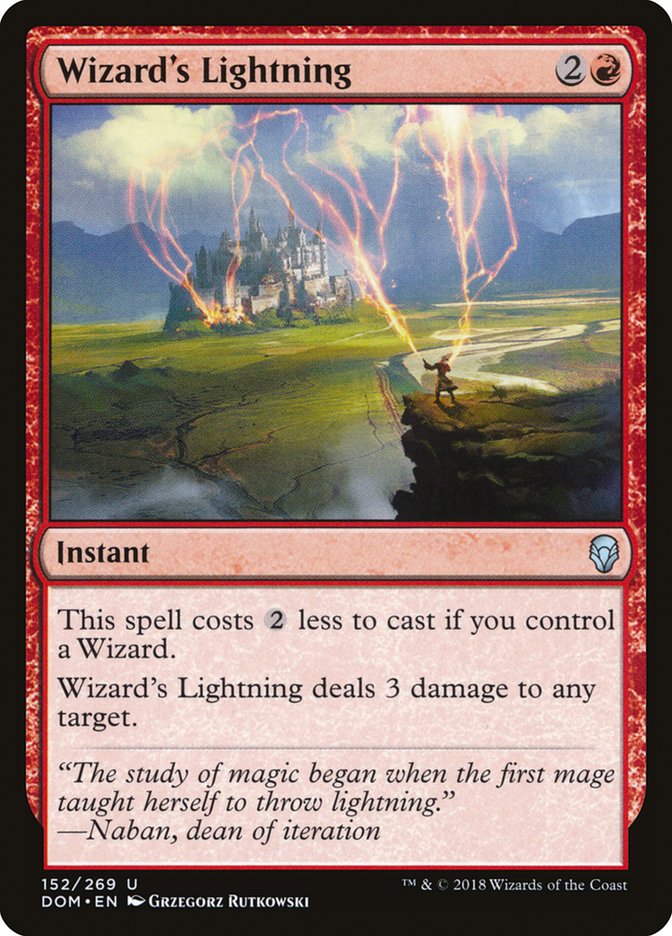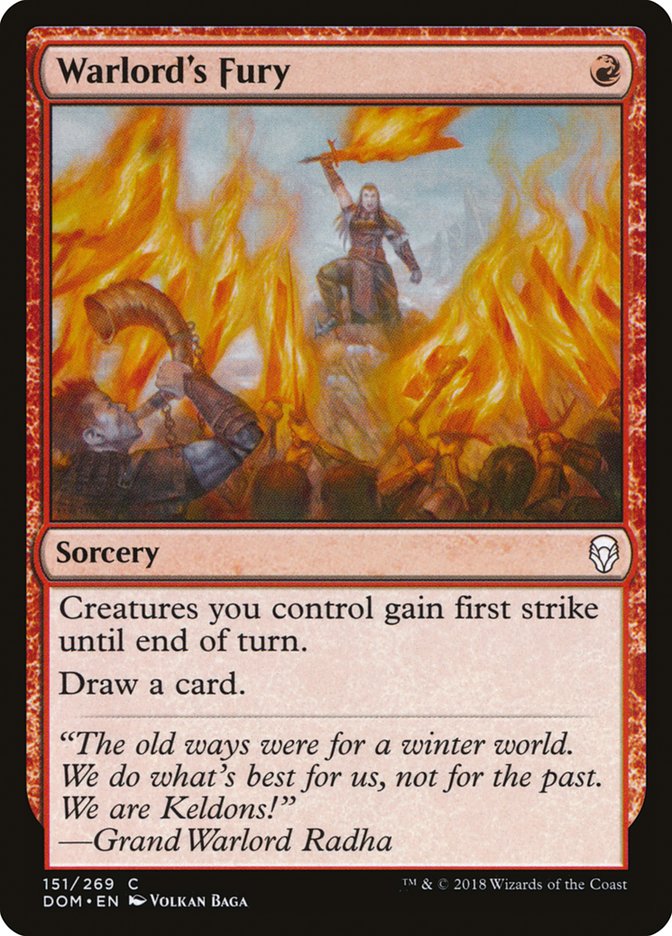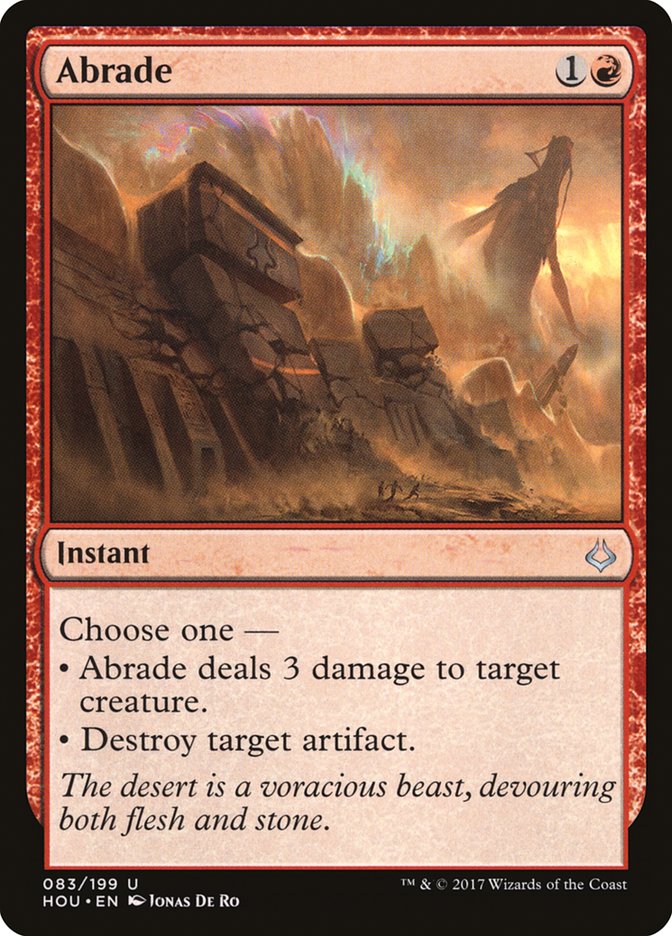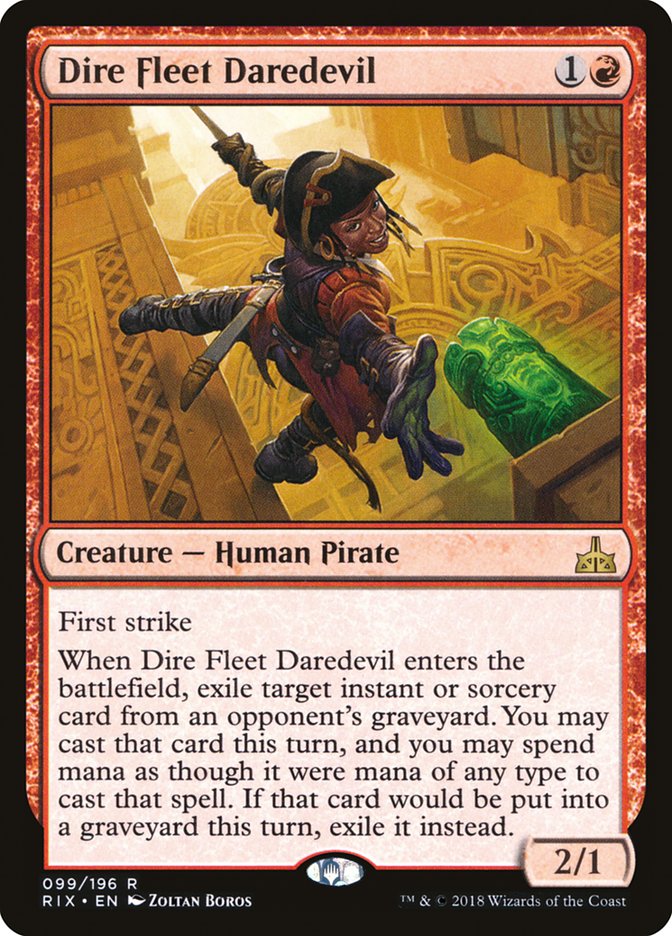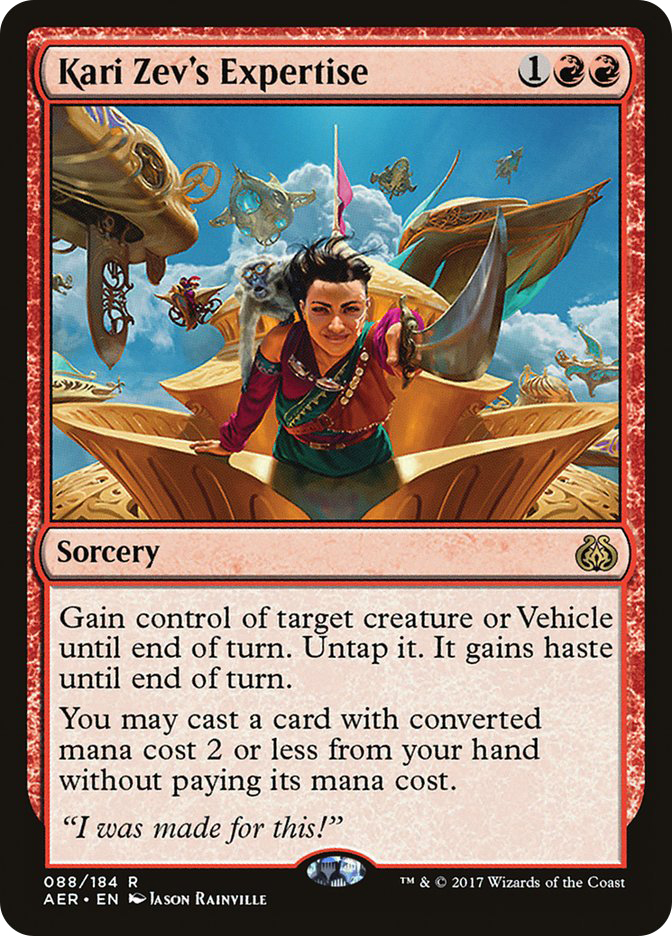I’m a sucker.
I just can’t help myself. Every time there’s some new spell- or prowess-based aggressive card, I just want to play it. Stormchaser Mage, Bedlam Reveler, Riddleform… I just love the idea of being aggressive while also drawing cards and feeling like I’m doing a ton of things. Prowess triggers! Cantrips! Burn spells! Undersized creatures that get to be a little better than rate when you put in a ton of work! Awkward deckbuilding constraints!
I want it all!
Thankfully, Dominaria delivers:
Wizards is a subtheme of Dominaria, and if they’re U/R, they’re going to be all about the aggressive prowess garbage that I love. Adeliz, the Cinder Wind is about as Izzet as you can get, and despite the fact she’s a glorified Skyknight Legionnaire, I can already feel myself slipping.
But before I let me heart do all the talking, I should let my brain have a few moments to speak.
From the Head: Why Prowess Decks Fail
The reason why spell-themed aggressive prowess decks usually fail is because the pieces are (mostly) mutually exclusive, unlike most great synergy decks where the pieces are (mostly) mutually inclusive. What does this mean, exactly?
In most great synergy decks, the payoff cards are usually also the same type of card as they are paying off.
Frogmite is an artifact, which then makes your future Frogmites cost less. Goblin Ringleader is a Goblin, so there is no tension between needing to find the right mix of Goblin Ringleaders and other Goblin cards because you can flip a Goblin Ringleader to a Goblin Ringleader. Lord of the Accursed not only pumps your other Zombies but is also a Zombie itself to perpetuate other Zombie synergies in your Zombie deck.
If a card is going to be mutually exclusive with the cards it synergizes with, it needs to be exceedingly powerful or have a low opportunity cost to be worth the effort.
Galvanic Blast, and other non-artifact artifact-synergy cards like Thoughtcast, have a high barrier of entry in a deck like Affinity because if you play too many of them, then none of them do anything. Collected Company, and by extension cards like Lead the Stampede, are awkward because they are cards that aren’t creatures but need you to fill your deck with creatures. Spreading Seas in a Merfolk deck is awkward because it isn’t a Merfolk, but its synergy with islandwalkers and the low opportunity cost of bring a cantrip make it work.
Looking at it like this, we can begin to see the disconnect that prowess-based aggressive decks often have.
On the one hand, we have our prowess threats. These are usually creatures that pay you off for playing a lot of noncreature spells in some way or another. We need a reasonable amount of these in order to have a consistent threat base, but if we have too many, then we have nothing to trigger them.
Then we have our spells, of which a critical mass is necessary to trigger our prowess threats early and often. The good thing here is that many of these cards are cards we would be happy playing anyway. Cards like Lightning Strike and Shock are going to be in any aggressive deck, and the opportunity cost of cantrips like Opt is very low.
As such, we have a difficult challenge in striking a balance between our prowess threats and our noncreature spells. It’s not impossible, but there needs to be a good balance as well as a high enough overall power level to make the venture worthwhile.
From the Heart: I Don’t Care!
What’s that, brain? You’re finally done babbling on about exclusivity or whatever? Great, now we can have some fun!
Creatures (17)
- 4 Soul-Scar Mage
- 4 Spellweaver Eternal
- 2 Fanatical Firebrand
- 3 Adeliz, the Cinder Wind
- 4 Ghitu Lavarunner
Lands (20)
Spells (23)
Sideboard

Wizards are here!
Let’s work up some prowess triggers and get our opponents dead!
At its core, U/R Wizards is a fairly typical red beatdown deck: play some cheap creatures, get in for some damage, and finish them off with burn spells. The primary difference between U/R Wizards and Mono-Red Aggro is that we’re more focused on burn spells (making removal worse against us), we have more evasion, and we have the opportunity for more explosive turns.
Let’s run through the deck:
Soul-Scar Mage is one of the most underrated one-drops across all formats, weighing in at only a touch worse than Monastery Swiftspear and having a surprisingly useful ability.
Being able to use our burn spells as reverse Giant Growths is valuable in taking down the large creatures that always give red decks trouble, like Aethersphere Harvester and Lyra Dawnbringer, and the -1/-1 counters also give us answers to cards like Adanto Vanguard and Hazoret the Fervent. While Soul-Scar Mage can be underwhelming in traditional Mono-Red Aggro, this deck would play ten copies of Soul-Scar Mage if it could.
Ghitu Lavarunner is the new Dominaria addition to the one-drop slot, and while not super-impressive, it gets the job done. Most important is that second point of toughness, making it immune to Fanatical Firebrand, Goblin Chainwhirler, and Walking Ballista, as well as being able to attack into a 1/1 token. Ghitu Lavarunner is usually on by Turn 3 or 4 in this deck, and as a 2/2 with haste from that point on, it’s a pretty good deal.
Two Fanatical Firebrands round out the one-drop slot as the best other available option. We really need to get on the battlefield early to do as much chip-shot damage as possible, and Fanatical Firebrand does a good job of that while also picking off Llanowar Elves and other annoying early creatures. Fanatical Firebrand gets the nod over Bomat Courier because we aren’t nearly as good at removing blockers as Mono-Red Aggro is and we want our burn spells going upstairs anyway. Siren Stormcaller is too hard on the manabase.
Our two-drop slot contains perhaps two of the biggest question marks in the deck, but for wildly different reasons.
Riddleform is a very powerful Magic card with a huge payoff — a 3/3 flier for only two mana that is immune to sorcery-speed removal is phenomenal — yet also can be awkward to turn on at times. Riddleform is great because it is a noncreature spell that is also a threat, but also a great example of the tension we described earlier between the deck’s prowess threats and noncreature spells. There will be times we want to go Turn 2 Riddleform into Turn 3 Adeliz, the Cinder Wind and just need to accept that Riddleform won’t be a creature. Powerful but awkward, Riddleform is fittingly the most perplexing card in the deck.
Spellweaver Eternal on the other hand is extremely thankful for the opportunity to make the jump from limited to constructed and not a bad fit for the deck, but ultimately somewhat underpowered. Spellweaver Eternal is a Wizard, is annoying to block, and of course has prowess, but is also fragile and another creature that doesn’t trigger prowess. We’d love to have Snapcaster Mage or Abbot of Keral Keep, but for now we’ve got Spellweaver Eternal.
Ah, yes, and now we get to Adeliz, the Cinder Wind.
Adeliz’s floor is a Skyknight Legionnaire with prowess, and while that is not particularly exciting, it is plenty passable for a deck looking to sneak in damage as much as possible. The ability to pump your “entire team” will usually be relegated to one, sometimes two creatures, but having essentially double prowess is a nice way to end a game quickly. Unless your opponent is interacting heavily, an unopposed Turn 3 Adeliz will usually allow you to present lethal damage, and that’s a pretty fast clock. It’s not overbearingly powerful, but it’s a nice curve-topper.
With our threats/payoffs out of the way, let’s look at the spells that will be fueling them.
Shock and Lightning Strike need no introduction, as full sets of each usually appear in Mono-Red Aggro, but perhaps the biggest payoff for playing Wizards at all is Wizard’s Lightning.
Wizard’s Lightning is going to be Lightning Bolt a large percentage of the time and gives the deck a much-higher-than-Standard-usually-gets density of powerful burn spells. It’s not uncommon to burn people out from eight or nine life, and Wizard’s Lightning is a large part of why that is possible. Water wet, Lightning Bolt great in aggressive decks… who would have thought?
Now we come to the cards that are not usually found in aggressive decks, Opt and Warlord’s Fury. These cards are almost strictly enablers for our prowess cards, with each having a slightly different effect.
Opt helps to trigger our things while also finding us gas, as one of the worst things that can happen to a deck like this is mana flooding. Warlord’s Fury has less control over what it draws but makes up for it in damage output. The trample on a card like Crash Through would be mostly lost on this deck, as your creatures tend to have between two and four power, but first strike is perfect for that range of power to get through most blockers that may get in the way. Warlord’s Fury is subtle, but a nice piece of the puzzle.
The Sideboard
Our sideboard is simple but effective.
One of the biggest draws to playing blue in your aggressive deck is access to cheap counterspells against the format’s control decks. There are many decks trying to resolve expensive four- and five-mana cards like Settle the Wreckage, Fumigate, planeswalkers, or (shudder!) Approach of the Second Sun, and aggressive starts backed by cheap counterspells puts a huge damper on any of those plans.
The primary purpose of Abrade is to destroy God-Pharaoh’s Gift, but there are certainly other artifacts floating around. There also will be times when you just want more removal, and Abrade will be ready to answer the call.
Another Mono-Red Aggro card, Goblin Chainwhirler doesn’t really fit into our deck’s plan or four-Island manabase, but it’s still a fantastic tool against any deck that is packed full of tokens or trying to go wide. Don’t forget that Goblin Chainwhirler combos beautifully with Soul-Scar Mage!
Consider Dire Fleet Daredevil, Snapcaster Mage’s awkward sibling, to be an honorary Wizard. Against other red decks, Dire Fleet Daredevil is going to feel even better than Snapcaster Mage, and it’s not bad as an extra threat against control decks that also helps to take the wind out of Torrential Gearhulk’s sails.
However, the real MVP of the sideboard is the oft-forgotten Kari Zev’s Expertise. With mono-green aggressive decks gaining popularity after the printing of Steel Leaf Champion, as well as the prevalence of Glorybringer and Rekindling Phoenix in the format, there’s no shortage of awesome creatures to Threaten and kill your opponent with. Furthermore, you almost always have more spells in hand, allowing you a great tempo boost and double prowess triggers. Nothing feels better than a big Kari Zev’s Expertise turn.
So Who’s Right, Head or Heart?
Despite the reasons why prowess decks tend to struggle, with the right mix they can certainly succeed. U/R Wizards is a unique take on aggression in the format with enough competitive advantages over other aggro decks to warrant a serious look. The heart may be screaming “Yes!” at the idea of prowess-based aggression, but when the results come in positive, it’s hard for the head to ignore them.
I went 5-0 with this deck in a League on Magic Online and it felt about as you would expect. Overall your cards are underpowered compared those of your opponents, but the deck is scrappy and aggressive while also rewarding tight play. It’s also fun as hell, and as a nice (but unintentional) side note is actually quite cheap to build.
It’s only fitting for head and heart to come together in a blue and red deck.


